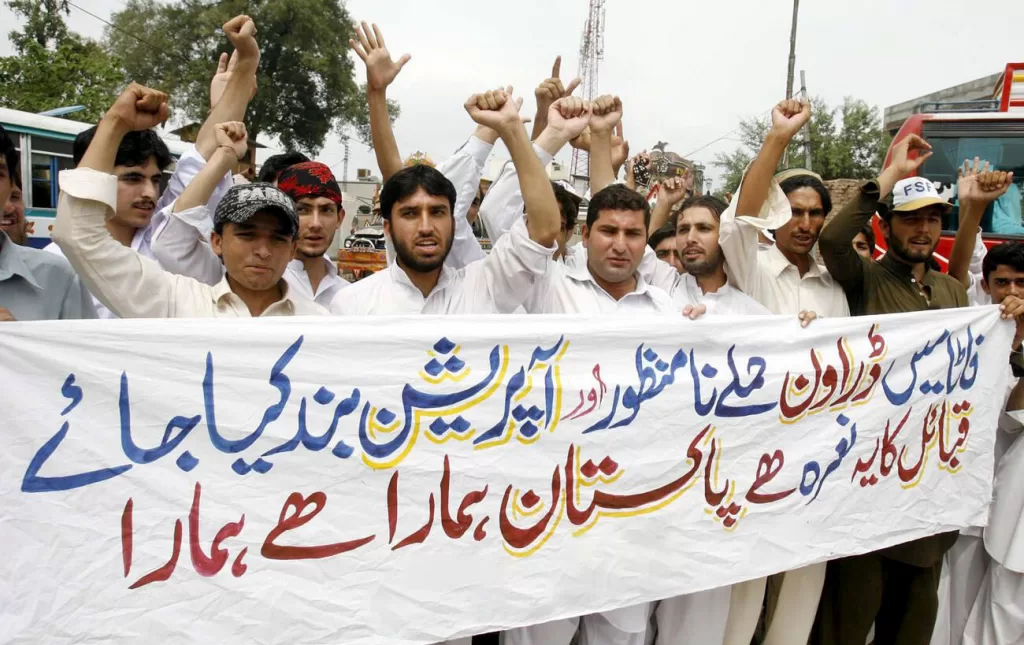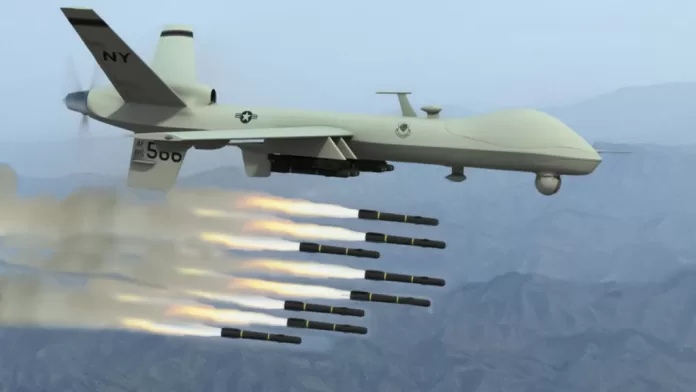Drone is a milder terminology used for the ‘Unarmed Combat Aerial Vehicle (UCAV) being employed by the CIA and other clandestine troops on behalf of American Department of Defence. One wonders whether this class of undeclared combatants are covered by the UN mandate that authorised the use of military force in Afghanistan. Surely, there is no legitimacy for using these aerial vehicles inside Pakistan. Beyond doubt, drone strikes in Pakistan are unethical, illegal, non-productive and a severe violation of international law.
America has not yet answered concerns regarding the secrecy, legality and efficacy of the drone warfare programme. Drone raids have created more extremists than they could eliminate. Obama administration argues that targeted drone attacks have a legal basis, drawing strength from the congressional authorization to use force after 9/11.
American intelligentsia is using its influence to bring drone warfare out of darkness of mystery and into public view. Their concerns are: secrecy, legality and morality. Drone strikes and targeted kill lists are highly classified. This makes it difficult to discern the true effectiveness of the drones at tactical level. No one knows who is on the American kill list, no one knows how they got there and no one knows what they can do to get themselves off. What makes this situation even worse is that no one can tell people in these communities what they can do to make themselves safe. It’s all terrifyingly random, sudden, and without warning.
Under the rules of ‘International Humanitarian Law’, targeted killing is only lawful when it meets three preconditions: the target is directly participating in the hostilities; the use of force is proportionate; and precautions are taken to minimize harm to civilians. According to International Law, invitation from the targeted country and the right of self defence, with certain preconditions, are the only two ways through which drone strikes can be justified on sovereign countries.
Even if all legal avenues have been addressed, the question remains: Does drone warfare create a safer environment and keep non-combatants out of harm’s way? On October 4, 2012, Stanford and New York Universities released a major study about the use of drones. The key message was: Drones are terrorizing an entire civilian population; they live under the constant threat of annihilation. People hear them day and night. Parents are afraid to send their children to school. Women are afraid to go to markets. Families are afraid to gather at funerals for people wrongly killed in earlier strikes. Drivers are afraid to deliver food from other parts of the country. The routines of daily life have been ripped to shreds. Indisputably innocent people cower in their homes, afraid to assemble on the streets. “Double taps,” or secondary strikes on the same target, have stopped residents from aiding those who have been injured; humanitarian agencies also delay their assistance by hours. The US defines militants as all military-age males, typically between 18 and 65. The alleged militants’ homes are tagged on a tip off from an informant. And because no one knows who the informants are, people are reluctant to invite neighbours into their homes.
Public opinion in Pakistan is vehemently hostile towards the usage of these so called drones. Pakistan has never granted overt approval for use of drones in its air-space. Rumours of covert understanding have correspondingly invoked denials from Pakistani side. However, President Musharraf’s recent acknowledgement that he had allowed limited usage of drones has severely dented Pakistan’s claim about violation of its sovereignty.
Americans are singing praises regarding the achievement of military objectives through drones. Part of this seems to be a sponsored effort by the military industrial lobbies vying for new orders for additional drones. In April 2012, the marketing and consultancy firm, Teal Group, projected that worldwide UAV spending will double over the next decade, reaching an estimated $94bn by 2021.
There is a need to ponder whether drones are effective at reducing the will of the adversary to fight. Recent figures out of Afghanistan are discouraging. The number of attacks reportedly carried out by “insurgents” in the period from April to June 2012 was 11% higher than during the same period of 2011. This resulted in almost 110 attacks a day during the month of June 2012, the highest number of attacks for that month since the war began. These statistics do not appear to be in line with an effective counterterrorism policy that boasts of sapping the will of the enemy to fight. On the contrary, one could argue that drone strikes are only encouraging more violence on the part of the insurgents.

The war in Afghanistan is now the longest war in America’s history. Perhaps some light could be shed on current events by looking back at America’s second longest war, the war in Vietnam. Here too, conventional wisdom held that if you just “bombed them” hard enough and long enough, you would weaken the enemy’s resistance and will to fight. This would then render the adversary more amenable to seeing and understanding your position, and seek a cessation to hostilities.
It was this thought process during the 1960s that led to the bombing campaign known as “Operation Rolling Thunder.” It was originally planned to last just twelve weeks and was designed to bring the enemy to his “senses.” It ended up lasting three years and nine months. In a study funded by the Defence Department, and carried out by the Rand Corporation, it was found that the bombing campaign did not have the intended effect on enemy morale. On the contrary, the study reported that “…enemy troops, despite increasing hardships and frustrations with no rewarding victories to show in return, have failed to reveal any signs of cracking.”
London-based ‘Bureau of Investigative Journalism’ estimated that due to drone attacks, 472 to 885 civilians were killed in Pakistan during the period 2002-2012. Another candid estimate puts the ratio of civilian casualties in Pakistan to as high as 97 percent. Such human tragedy cannot be pushed under the carpet in the garb of innocent looking terminologies like ‘collateral damage’.
From utility stand point, usage of such aerial vehicles is proving counterproductive. More than inaccuracy of onboard weapons, flawed intelligence information appears to be the underlying cause for these uncalled for civilian losses. Drone strikes in Pakistan are shrinking the space created by the Pakistan Army after successful operations in areas like Swat, Bajour and South Waziristan. Majority of people in FATA are against the drone strikes and favour Pakistan Army operation to clear out militants from their areas.




